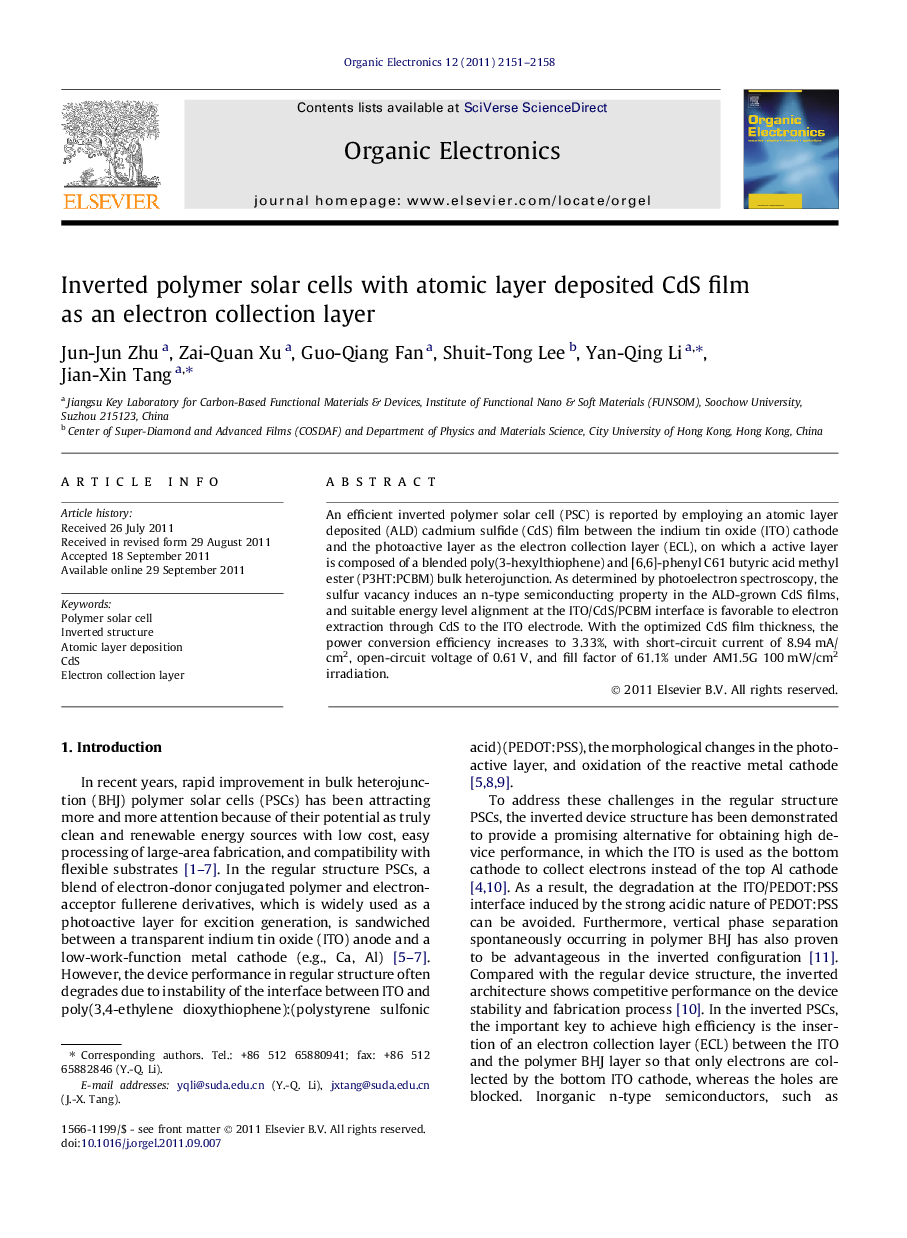| Article ID | Journal | Published Year | Pages | File Type |
|---|---|---|---|---|
| 1267575 | Organic Electronics | 2011 | 8 Pages |
An efficient inverted polymer solar cell (PSC) is reported by employing an atomic layer deposited (ALD) cadmium sulfide (CdS) film between the indium tin oxide (ITO) cathode and the photoactive layer as the electron collection layer (ECL), on which a active layer is composed of a blended poly(3-hexylthiophene) and [6,6]-phenyl C61 butyric acid methyl ester (P3HT:PCBM) bulk heterojunction. As determined by photoelectron spectroscopy, the sulfur vacancy induces an n-type semiconducting property in the ALD-grown CdS films, and suitable energy level alignment at the ITO/CdS/PCBM interface is favorable to electron extraction through CdS to the ITO electrode. With the optimized CdS film thickness, the power conversion efficiency increases to 3.33%, with short-circuit current of 8.94 mA/cm2, open-circuit voltage of 0.61 V, and fill factor of 61.1% under AM1.5G 100 mW/cm2 irradiation.
Graphical abstractFigure optionsDownload full-size imageDownload as PowerPoint slideHighlights► CdS is employed as an electron collection layer for efficient inverted polymer solar cells. ► The CdS film is obtained by atomic layer deposition (ALD) at low temperature. ► Energy level alignment between CdS and fullerene derivative is favorable to electron extraction.
